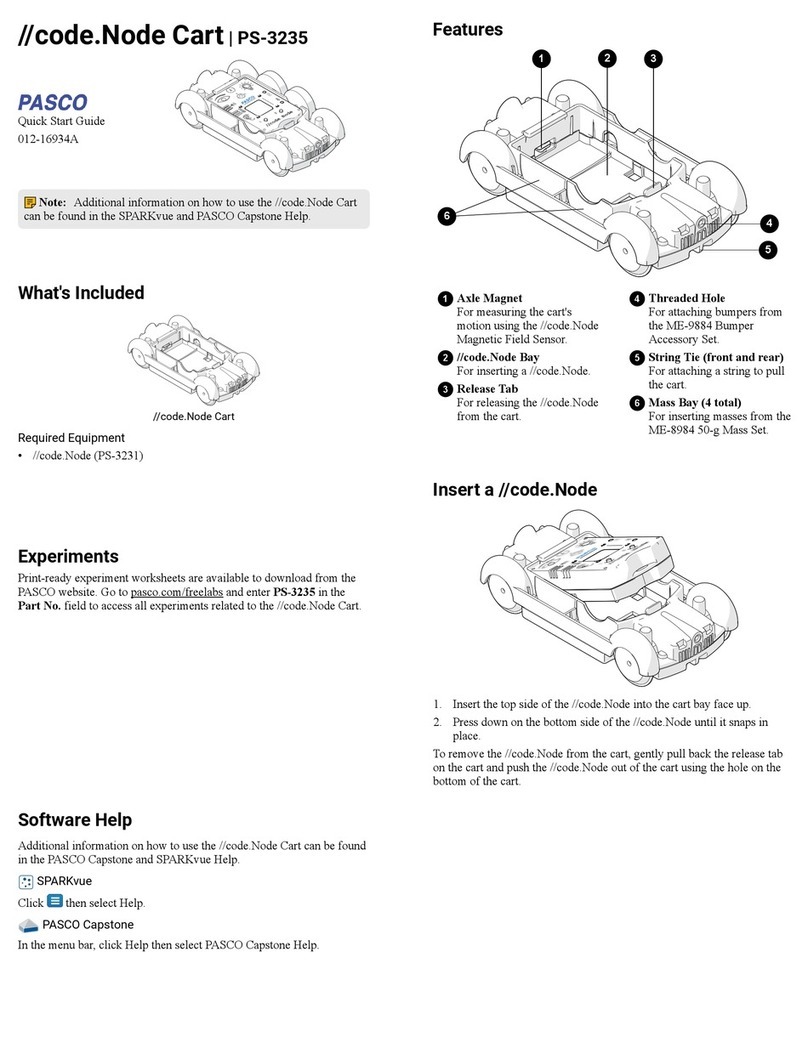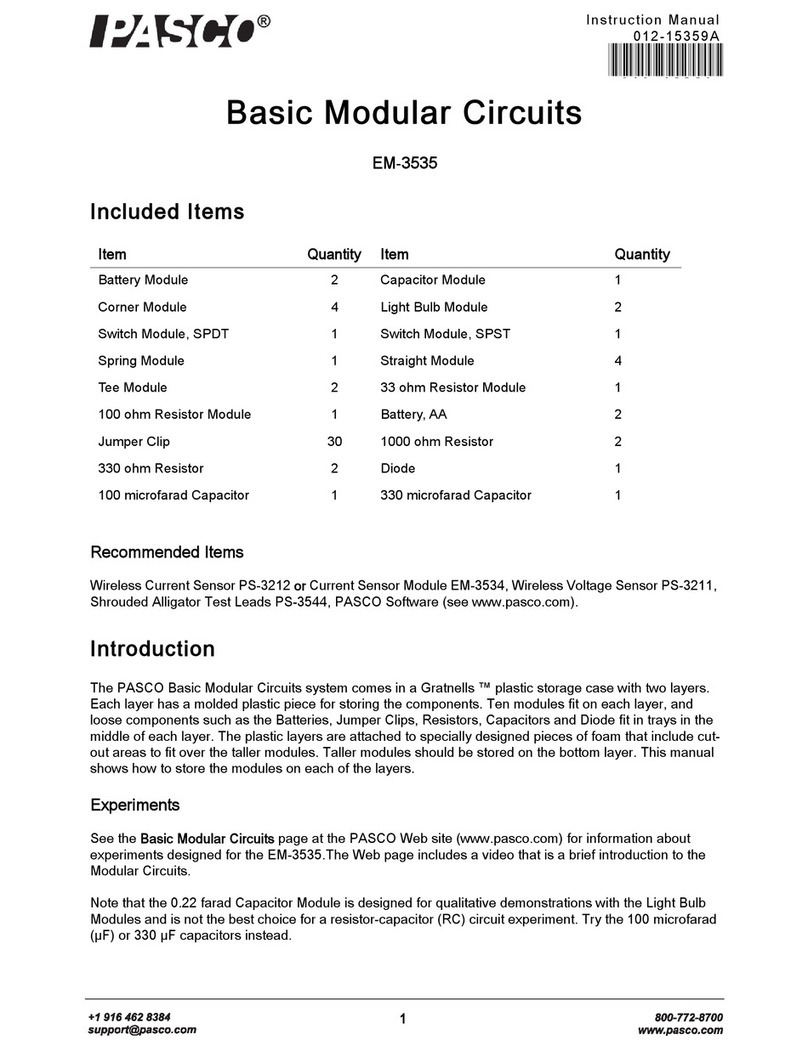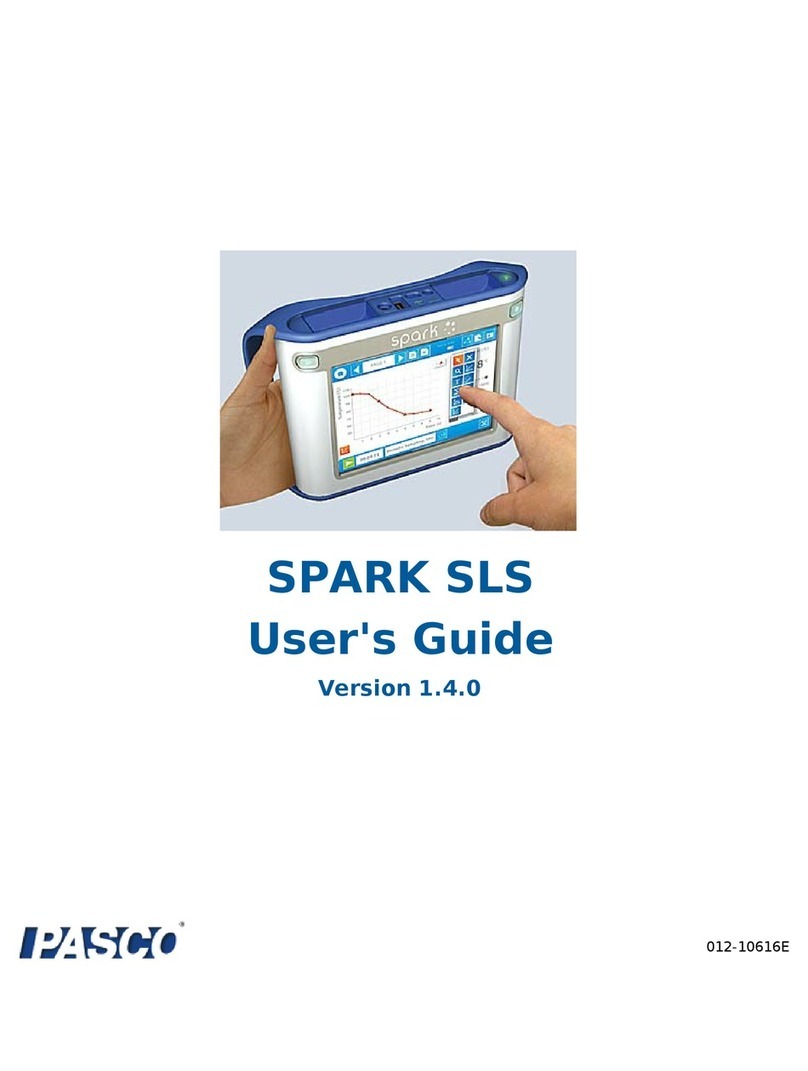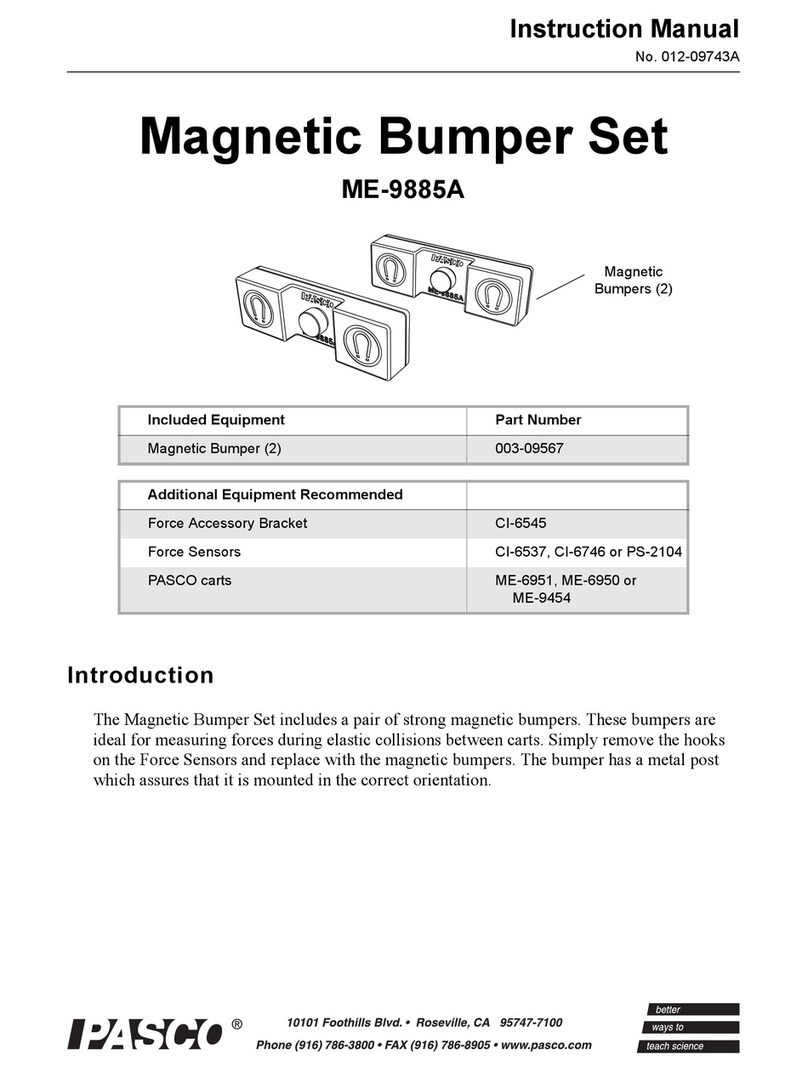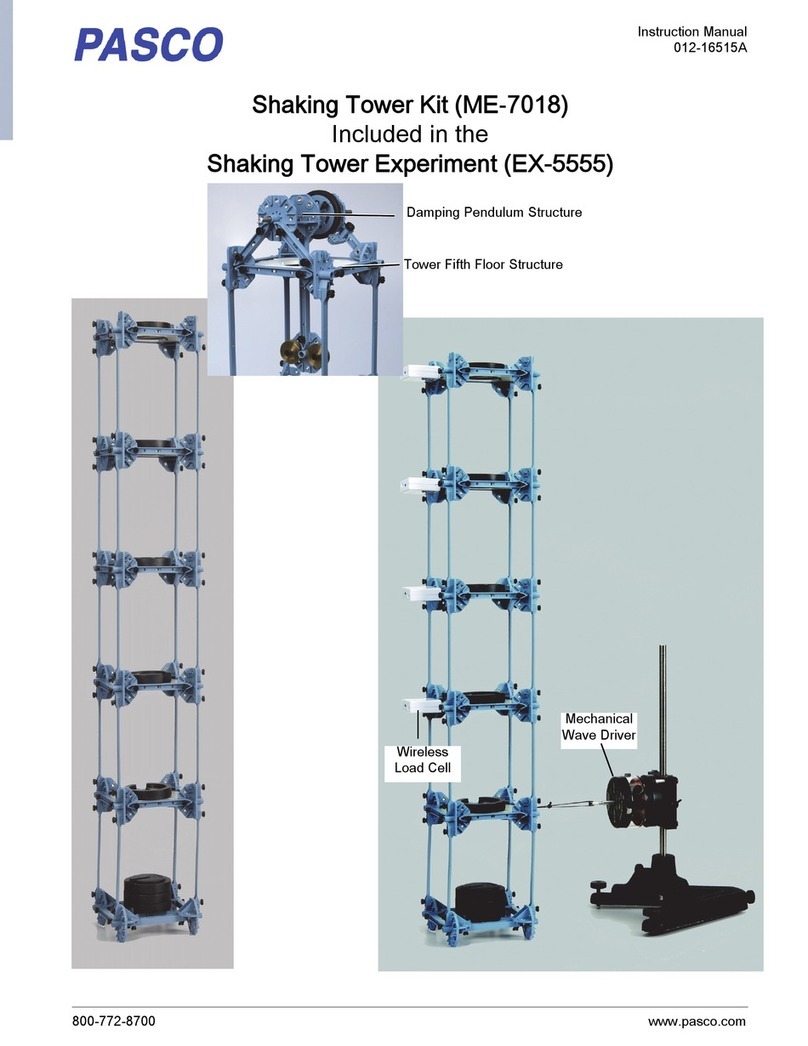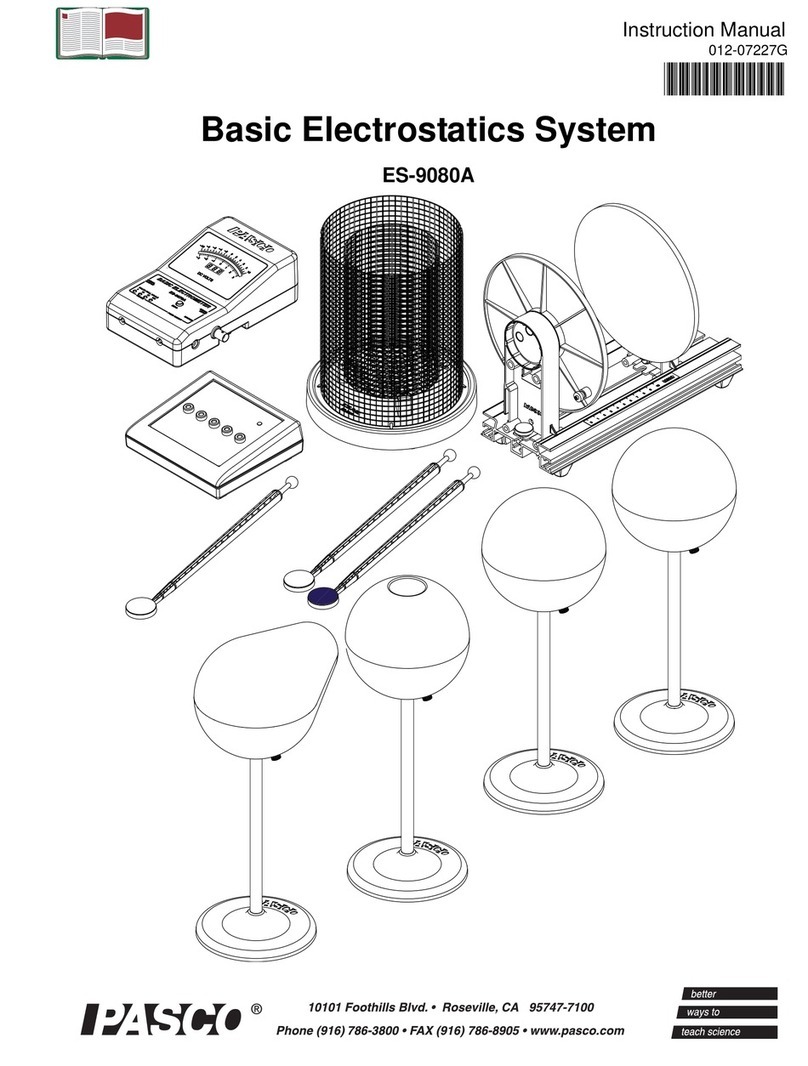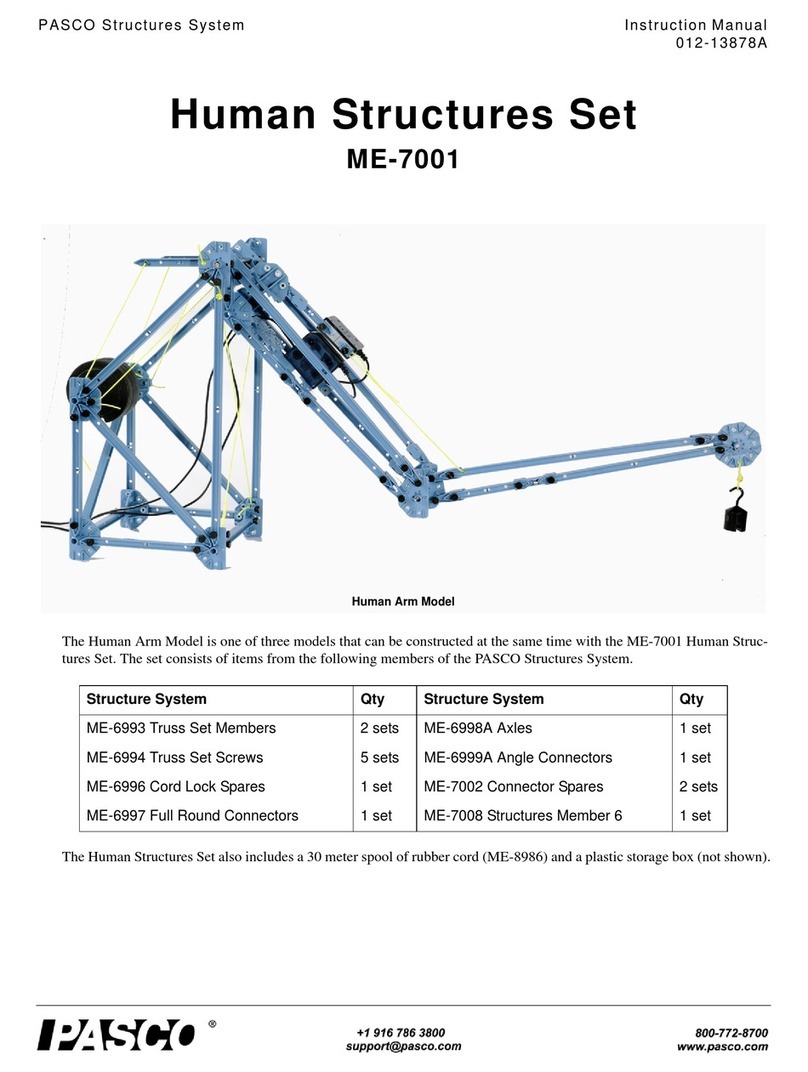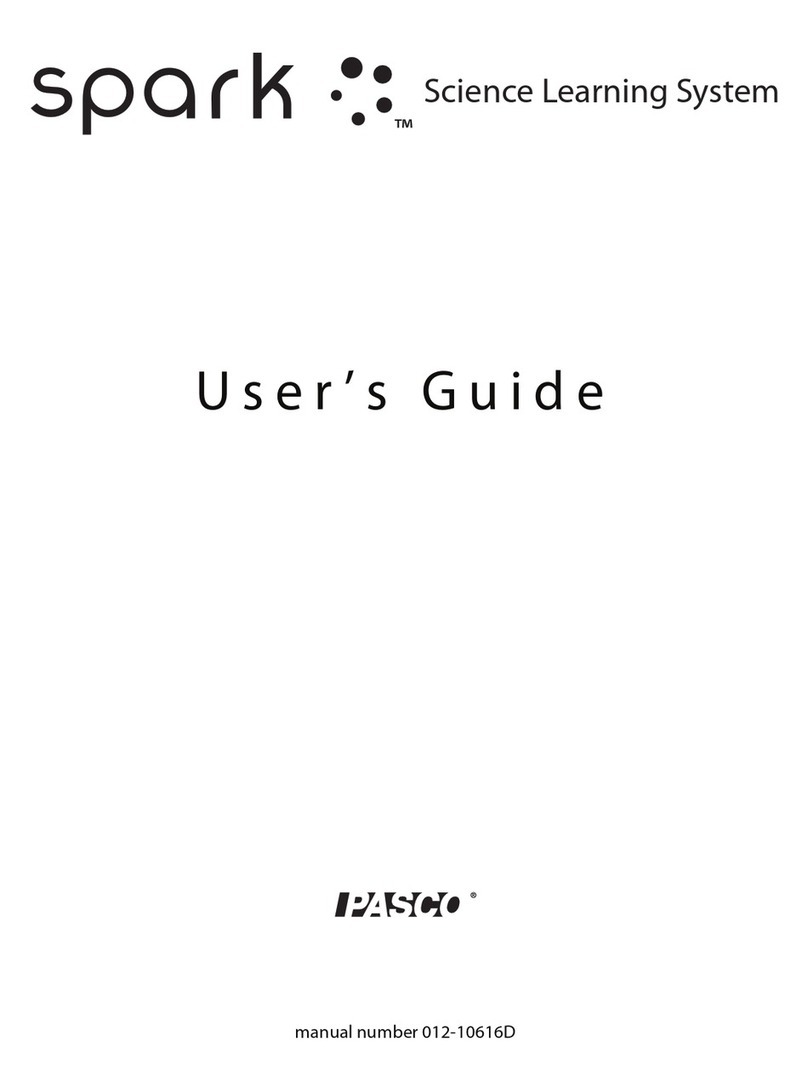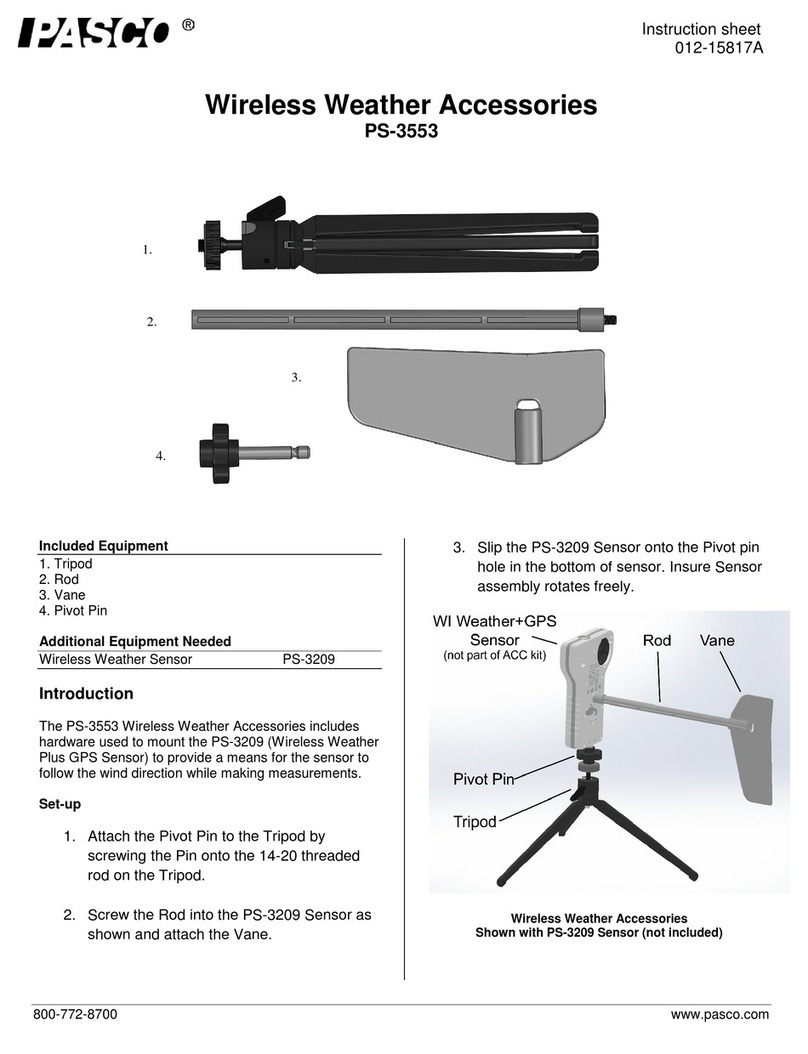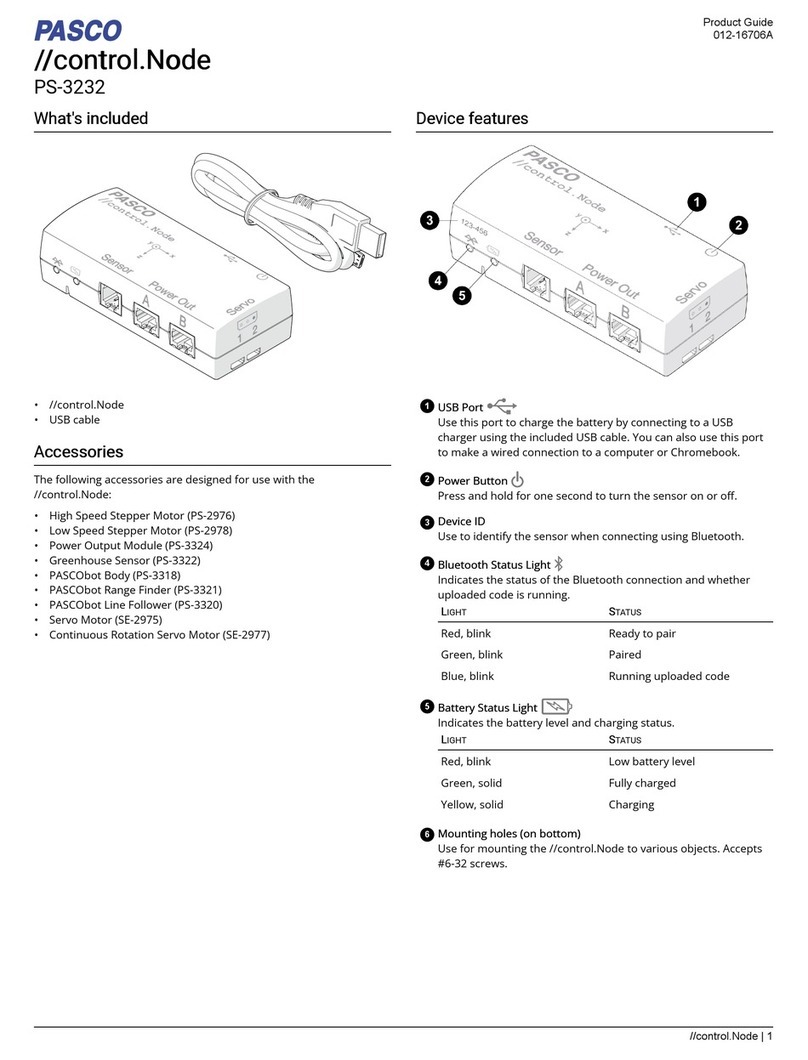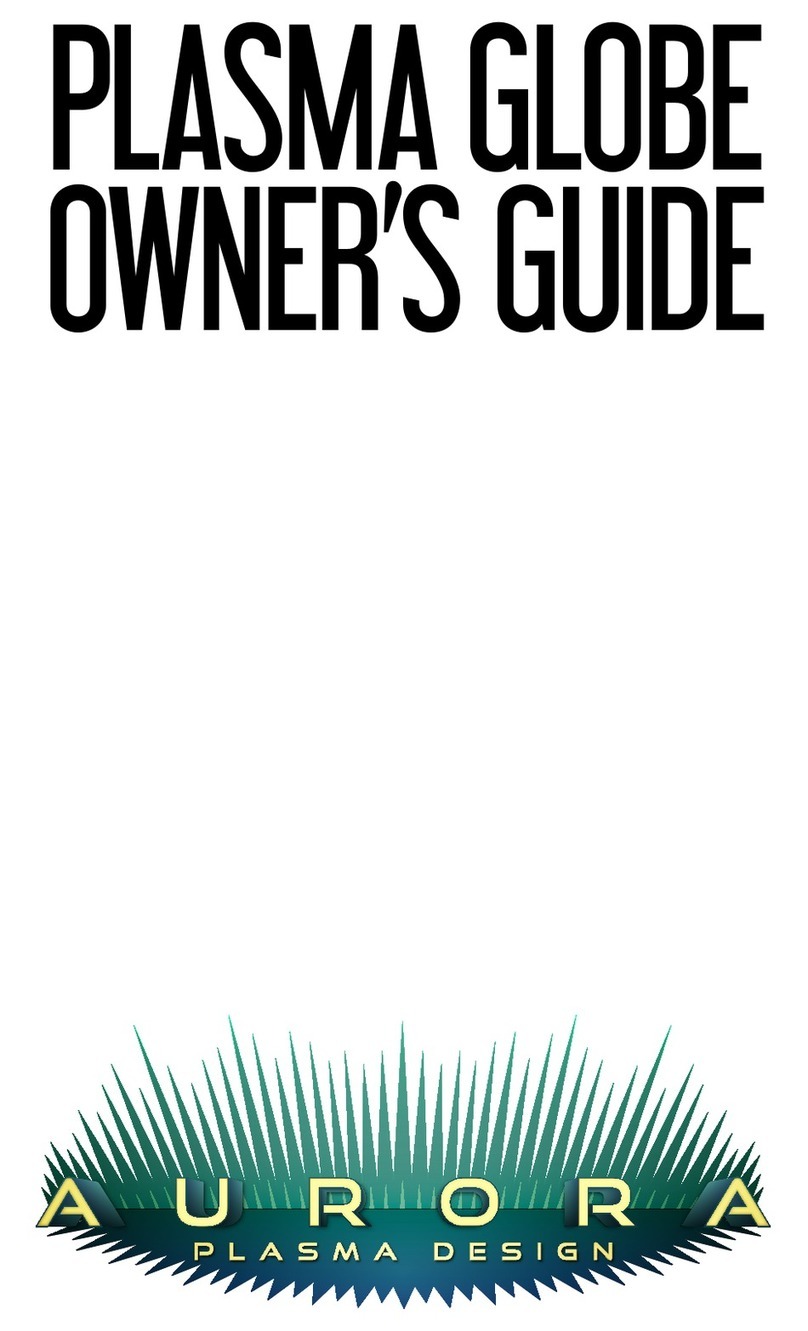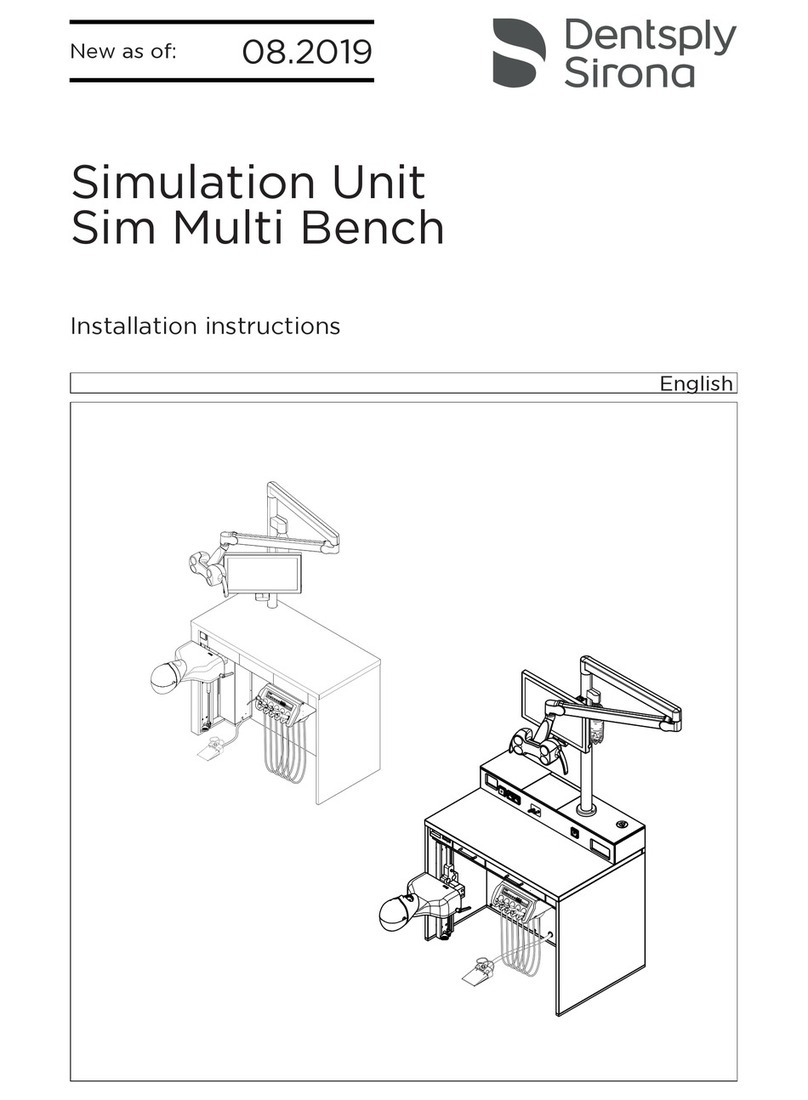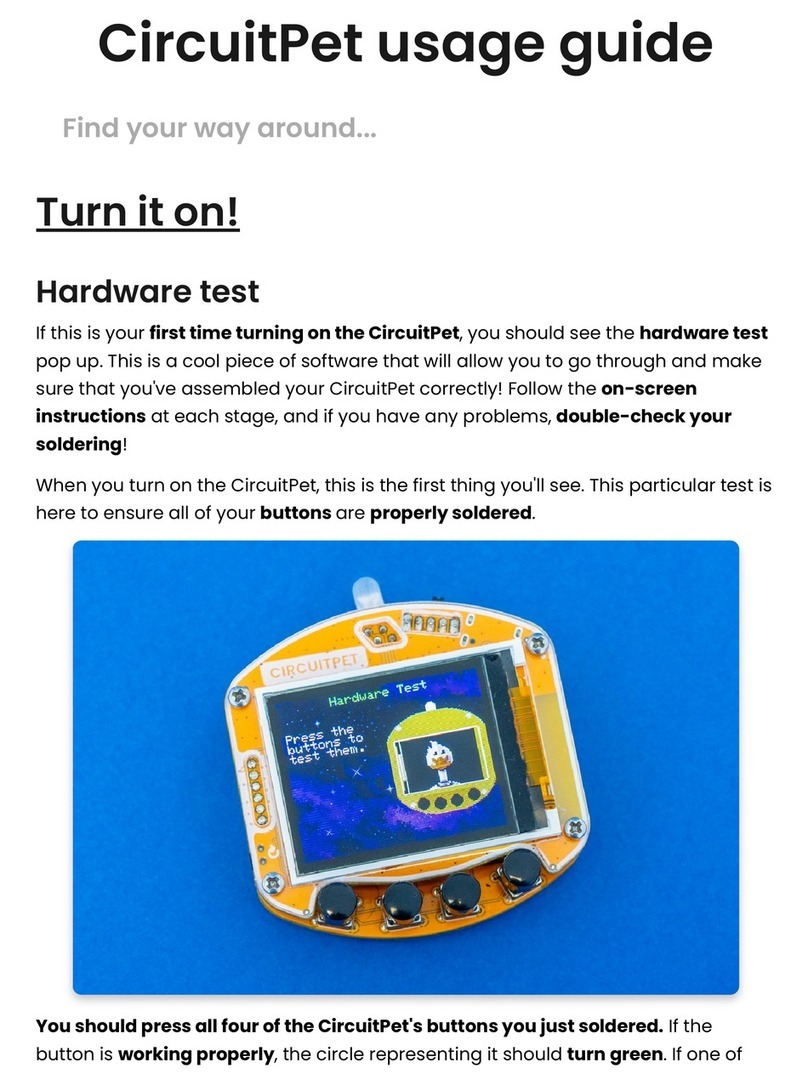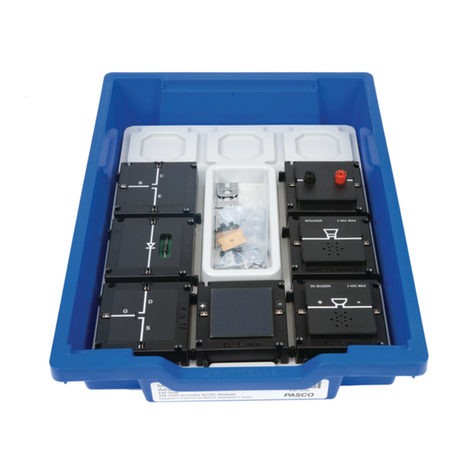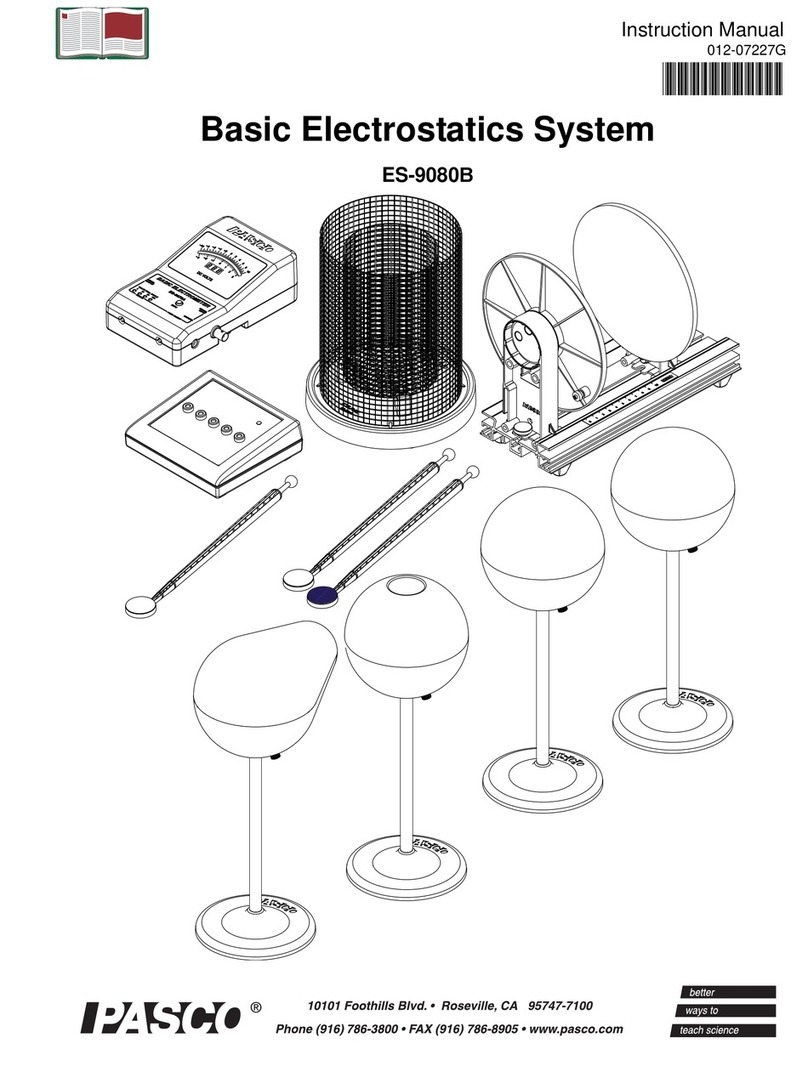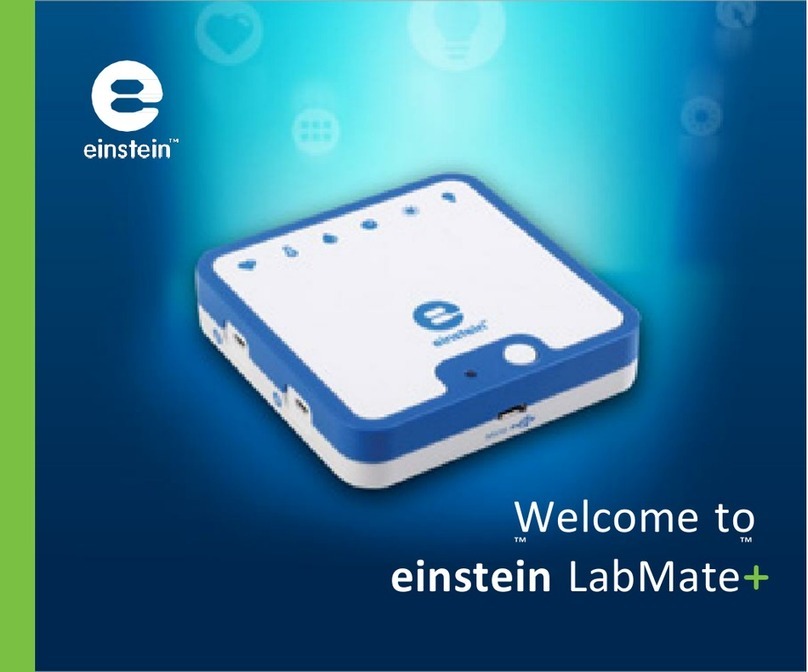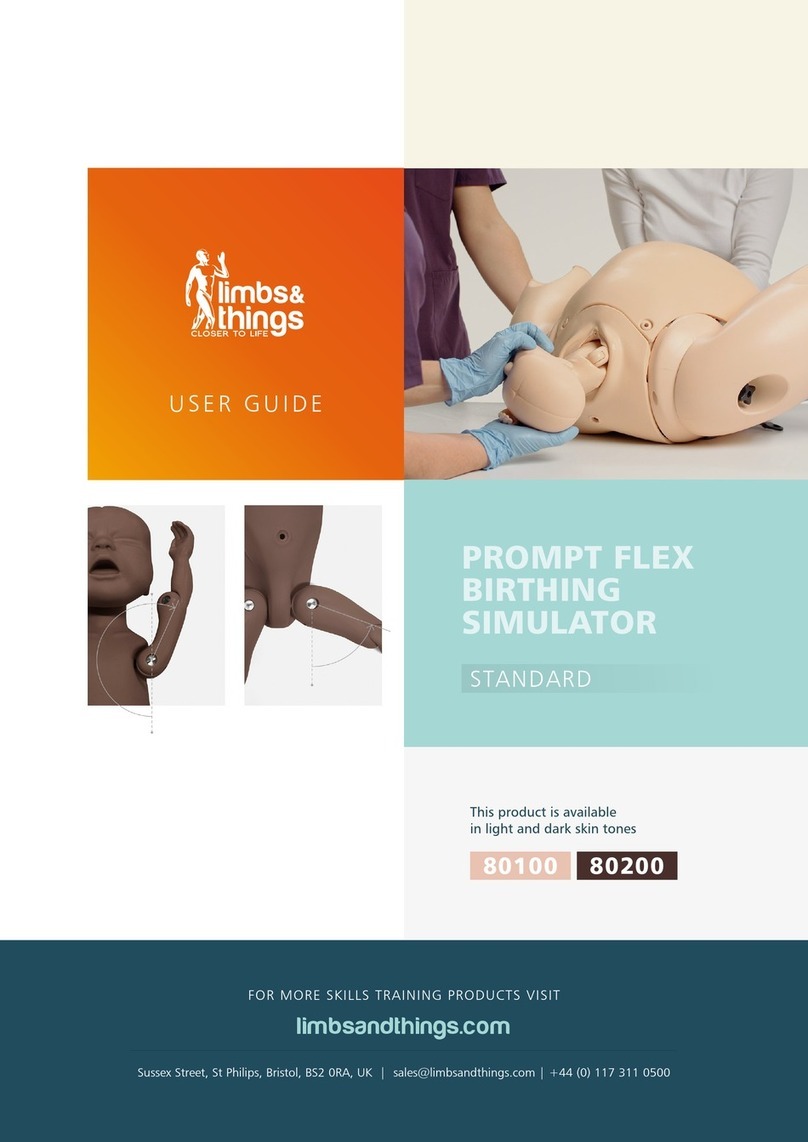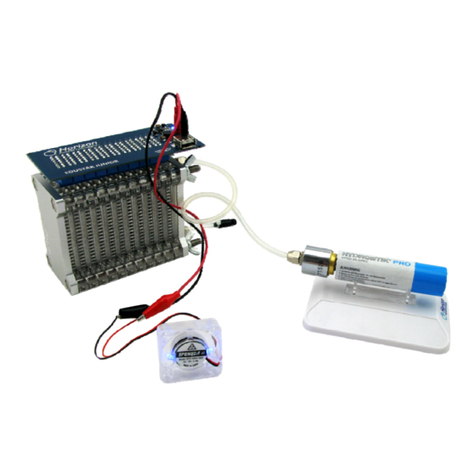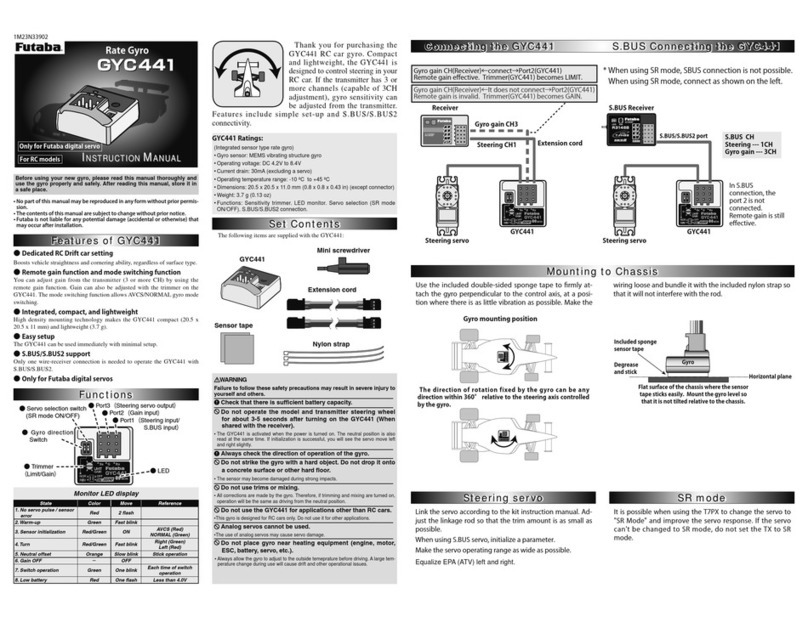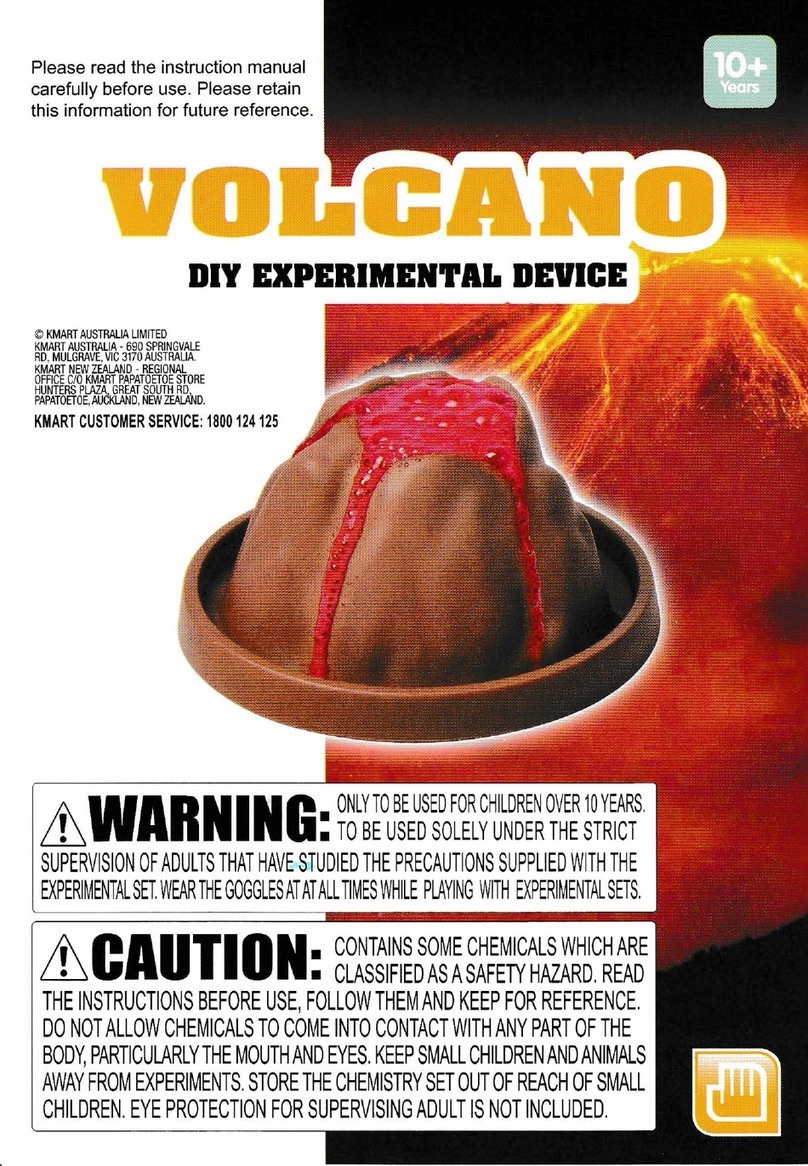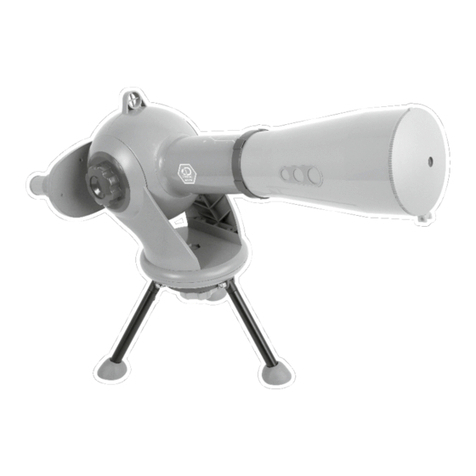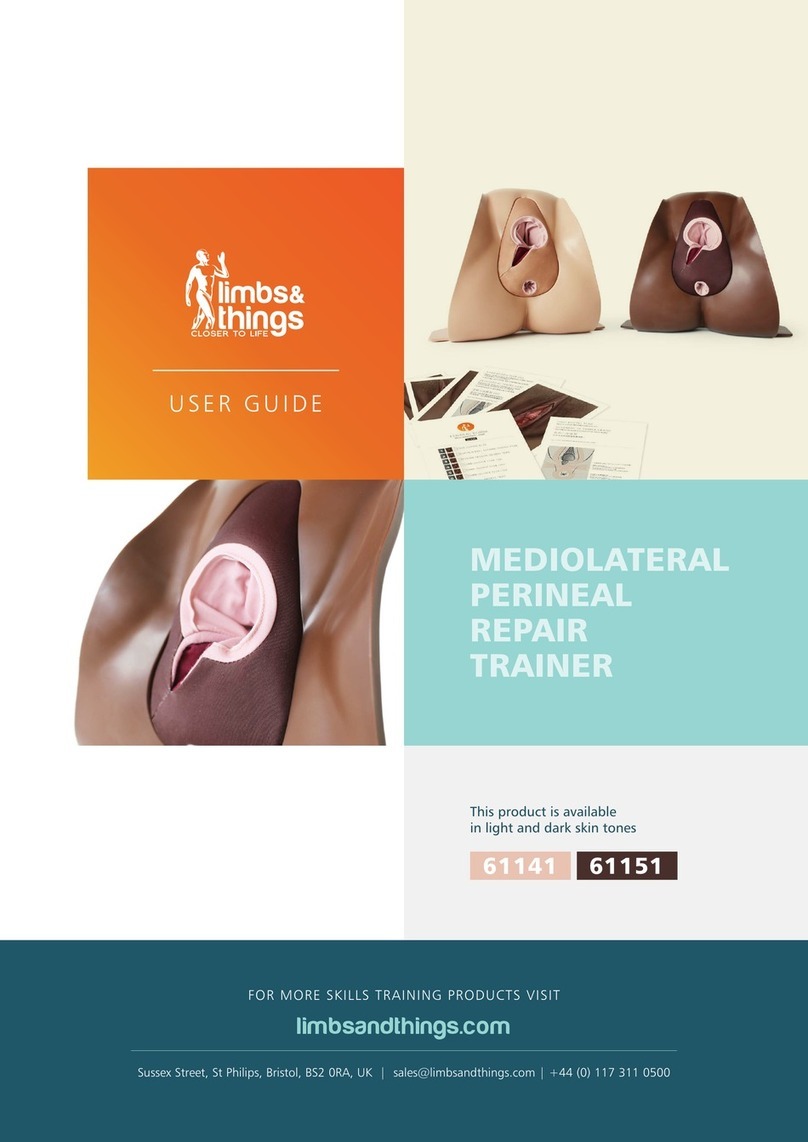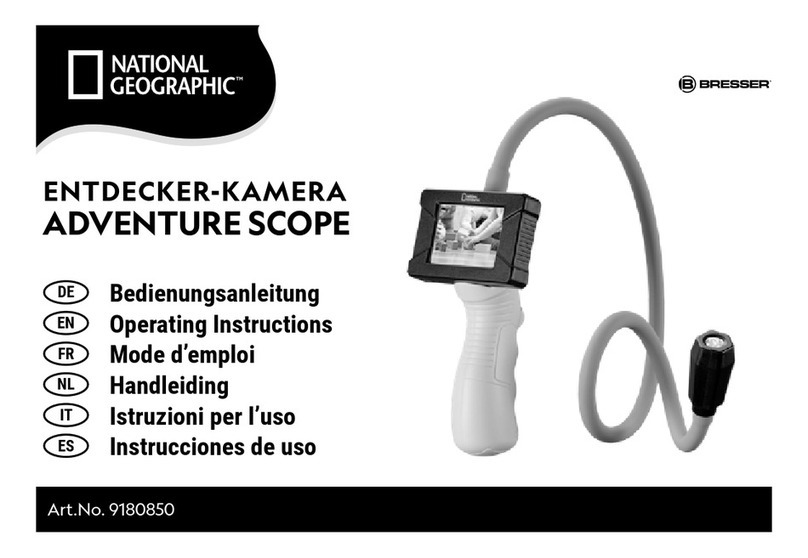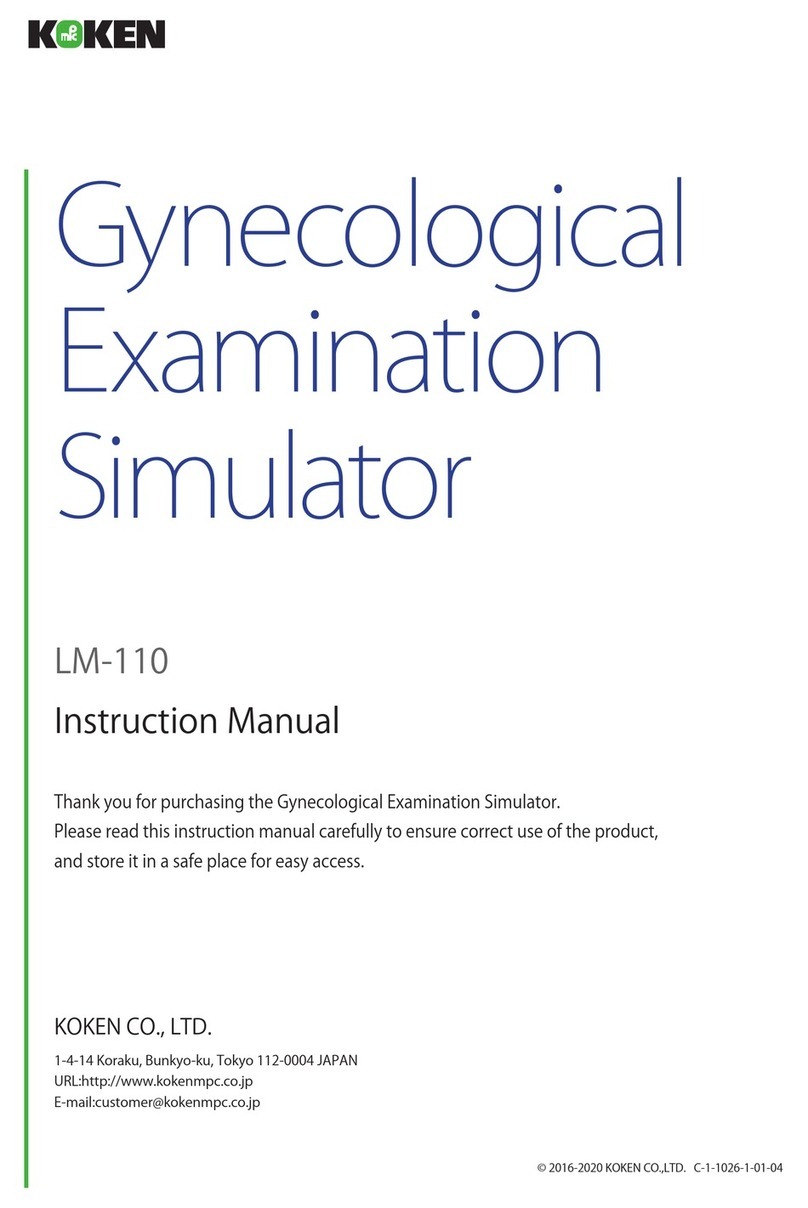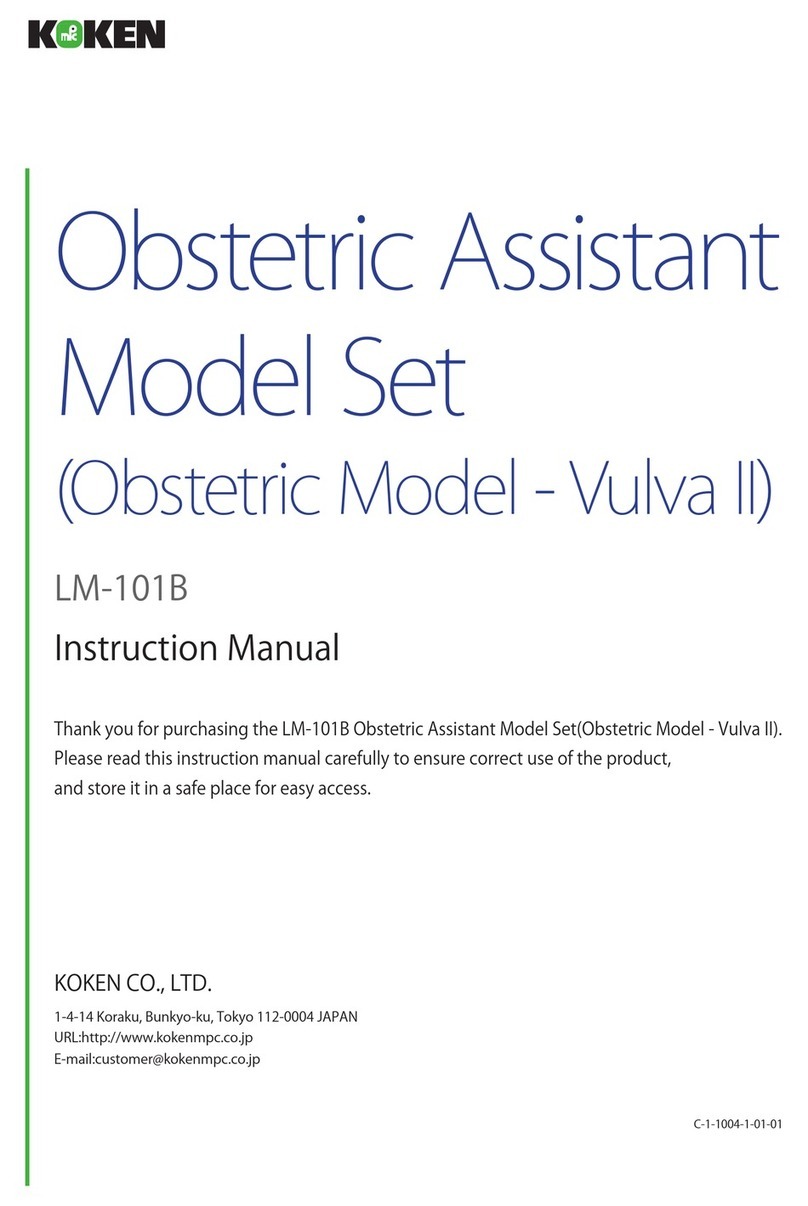
Coulomb Balance 012-03760E
4
IMPORTANT: If you live in an area where
humidity is always high, and if you have no facilities
for controlling humidity, the experiment will be
difficult, if not impossible, to perform. Static
charges are very hard to maintain in a humid
atmosphere because of surface conductivity.
Experiments with the Coulomb Balance are
straightforward and quite accurate, yet, as with any
quantitative electrostatic experiment, frustration lurks just
around the corner. A charged shirt sleeve, an open
window, an excessively humid dayany of these and
more can affect your experiment. However, if you
carefully follow the tips listed below, youve got a good
start toward a successful experiment.
Perform the experiment during the time of year when
humidity is lowest.
Perform the experiment in a draft-free room.
The table on which you set up the experiment should
be made of an insulating materialwood, masonite,
plastic, etc. If a metal table is used, image charges
will arise in the table that will significantly affect the
results. (This is also true for insulating materials, but
the effect is significantly reduced.)
Position the torsion balance at least two feet away
from walls or other objects which could be charged
or have a charge induced on them.
When performing experiments, stand directly behind
the balance and at a maximum comfortable distance
from it. This will minimize the effects of static
charges that may collect on clothing.
Avoid wearing synthetic fabrics, because they tend to
acquire large static charges. Short sleeve cotton
clothes are best, and a grounding wire connected to
the experimenter is helpful.
Use a stable, regulated kilovolt power supply to
charge the spheres. This will help ensure a constant
charge throughout an experiment.
When charging the spheres, turn the power supply
on, charge the spheres, then immediately turn the
supply off. The high voltage at the terminals of the
supply can cause leakage currents which will affect
the torsion balance. A supply with a momentary
power on button is ideal.
When charging the spheres, hold the charging probe
near the end of the handle, so your hand is as far
from the sphere as possible. If your hand is too close
to the sphere, it will have a capacitive effect,
increasing the charge on the sphere for a given
voltage. This effect should be minimized so the
charge on the spheres can be accurately reproduced
when recharging during the experiment.
If you are using a PASCO Electrometer (Model
ES-9035 or ES9054A) to measure the charge on the
spheres, connect the voltage output to a digital
multimeter so that values can be measured more
accurately. It is also useful to calibrate the
electrometer. This is done by applying a calibrating
voltage to the input and measuring the electrometer
output on the digital multimeter. Your measured
values can then be adjusted as necessary.
Surface contamination on the rods that support the
charged spheres can cause charge leakage. To
prevent this, avoid handling these parts as much as
possible and occasionally wipe them with alcohol to
removecontamination.
There will always be some charge leakage. Perform
measurements as quickly as possible after charging,
to minimize the leakage effects.
Recharge the spheres before each measurement.
Tips for Accurate Results
